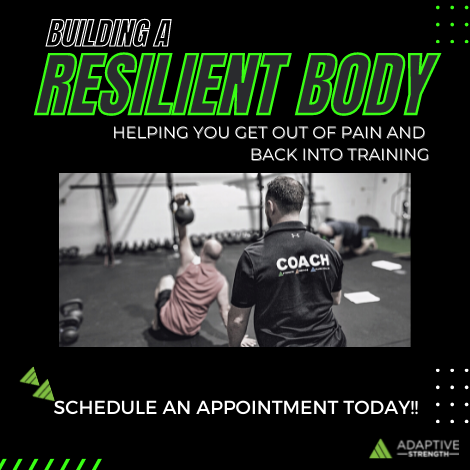I’ve never been a cardio guy.
I just didn’t enjoy it
I knew I was supposed to do cardio because it’s good for my heart and what not
So I’ve started to make cardio – in particular slow steady state cardio- a bigger part of my life. All because I just can’t ignore the benefits of “Zone 2 Training” any longer
What is Zone 2 training:
Over the years, exercise scientists have developed “training zones” to help athletes and coaches understand which energy system and muscle fibers they’re using at a given exercise intensity level
One such system divides training into six zones. Zone 1 is the lowest intensity (sitting down, walking around your house etc.) and zone 6 is the highest intensity (all-out sprinting, deadlift a heavy set of five, etc)
- Zone 1
- Energy source mainly used: fat
- Zone 2
- Energy source mainly used: fat trending into carbohydrates
- Zone 3
- Energy source mainly used: fat trending into carbohydrates
- Zone 4
- Energy source mainly used: carbohydrates
- Zone 5
- Energy source mainly used: carbohydrates
- Zone 6
- Energy source mainly used: carbohydrates trending into creatine phosphate
So you can see, the type of fuel your body uses to create ATP* changes as you go up in intensity. In zones 1 and 2, you’re using primarily fat. As you shift to Zone 3, you start using carbohydrates. When you reach zone 6, you use creatine phosphate to create ATP.
*(ATP: all cells in your body are fueled by adenosine triphosphate or ATP. When you walk, you’re using ATP. Deadlift? Powered by ATP)
In Zone 2, your exercise intensity is at a level in which you are stimulating your cells’ mitochondrial function the most. You can meet your body’s demand for ATP using only fat and oxygen in your mitochondria. If you were to go a bit harder, your body would start using more carbs in your cells’ cytosol to create ATP through the process of glycolysis.
Most people don’t spend a lot of time in Zone 2. Instead they usually skip to zones 3,4,5 where they primarily use carbs as their fuel source
When a lot of people start working out they’ll do something like F45 or Crossfit- if not those programs, then a workout that includes the same kind of form and intensity. We have this idea that if exercise doesn’t feel painful and uncomfortable, it’s not doing anything
We also jump right past zone 2 because it’s simply really easy to do
But according to a lot of research, you’re missing out on many health and performance benefits by giving Zone 2 cardio a miss
The Benefits of Zone 2 Training:
- Increases the number and efficiency of mitochondria in your body.
- The more time spent in zone 2 training, the better your body gets at burning fat for energy. The body’s inefficiency at using fat for fuel contributes to many health problems like insulin resistance, dementia and even cancer. Basically, if you want to move better, have more energy and live longer you want to exercise and live longer you want to exercise a lot in zone 2.
- Improves your performance as an endurance athlete.
- More time in zone 2 will allow you to go faster for longer. Zone 2 cardio has been used for decades by elite athletes. Professional runners spend about 80% of their workout time in zone 2 while amateurs and weekend warriors spend most of their time in zone 3 and 4
What’s counter intuitive about spending more time in Zone 2 during your runs and rides is that while it doesn’t feel like you’re going that hard, it makes you a better athlete. You are able to go progressively faster and longer, while your heart remains low. As you train your body’s ability to use fat for fuel, you’ll be able to increase your pace without shifting over to carb-burning. And because you’re using fat, you’ll be able to go faster for longer because you have a nearly unlimited supply of fat
- Improves Cardiovascular health
- Besides exercising your mitochondria, zone 2 cardio also gives your heart and blood system a workout. Eg your heart will get stronger and will require fewer pumps to bump blood etc
- Improve work capacity:
- This interests me as I’m primarily interested in strength. Zone 2 cardio can help you recover more quickly between lifting sets
These are just a few key reasons but there are many others from prevention to certain diseases, mental health benefits or injury prevention and recovery
How to Determine if you’re in Zone 2:
Heart Rate Method:
The most common way people determine whether they’re in Zone 2 is by tracking their heart rate while exercising.
The idea is that our heart beats at a certain percentage of our maximum heart rate, depending on what zone of intensity we’re in.
When you’re in Zone 2, your heart beats at 70-80% of your maximum heart rate, more or less.
So if your maximum heart rate is 180, your Zone 2 heart rate would have a minimum threshold of 126 and maximum threshold of 144; the more you can stay around the 144 mark without exceeding it, the better.
Easiest way to roughly determine your maximum heart rate is 220-age
So if you’re 30 years old, your maximum heart rate would be 190 (220 – 30 = 190).
70-80% of 190 would give you a Zone 2 heart rate range of 133-152, and you would want to stay as close to that 152 number as possible, without going over.
Talking Test:
The easiest (and yet still surprisingly accurate) way to determine if you’re in Zone 2 is to do the “talking test.” When you’re exercising in Zone 2, you can comfortably have a conversation, but will still sound a little breathy; you’re not able to talk as clearly as when you’re at rest, but you’re still capable of talking.
Physician and health/performance guru Peter Attia has the best description of what this feels like. He says when he’s in Zone 2, he can comfortably have a conversation with someone on the phone for hours, but the person on the other end of the phone would notice that he was exercising.
Personally, how I determine if I’m in Zone 2 is a combo of the Heart Rate and the talk test. I’ll work up to that heart rate and then use the talk test to refine my intensity.
How to Get your Zone 2 Cardio:
The good news is you can get it however you like
If you like to bike, bike. You could swim, run/walk, ruck
If you get bored you can always mix things up
A Lot of our members will do there zone 2 training such as these examples below:
Example 1:Depending on your fitness level: Repeat the following circuit for 20-45mins
Airbike 3mins
KB Swing x 10
Turkish Get Up x 1/1
Farmer Carry
Example 2:Depending on your fitness level: Repeat the following circuit for 20-45mins
Airbike 60s
TRX Row x 8
Ski Erg x 20m
Pushups x 8
Remember the key is to work at a level that is repeatable, sustainable and keeps your heart rate within the Zone 2 parameters.
Ideally 150-300 mins a week
Finally, while Zone 2 should make up the majority of your cardiovascular exercise- 80% is a good proportion to aim for- doing small amounts of high intensity cardio is still important for health, fitness, and athletic performance. One weekly or fortnight HIIT session where you go all out will be more than enough
But 80% of your time focuses on the slow and steady, health wonder working zone 2. Add in a couple of full body strength sessions a week and you have the perfect routine for health, fitness and athletic longevity







